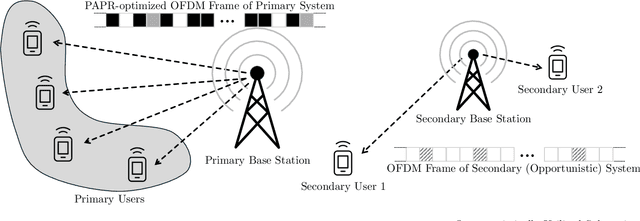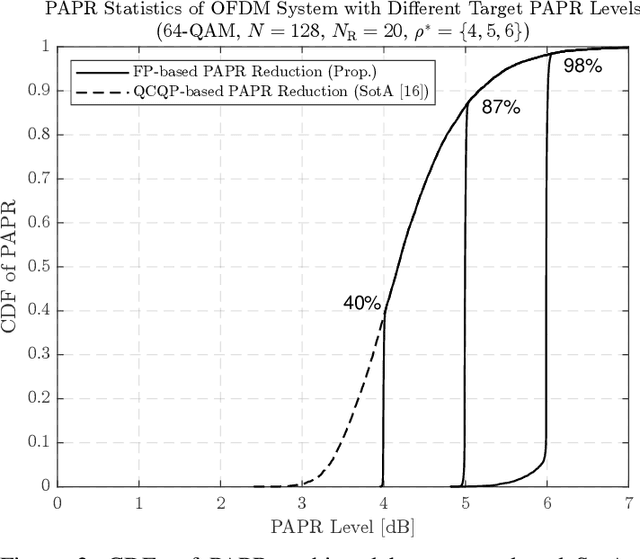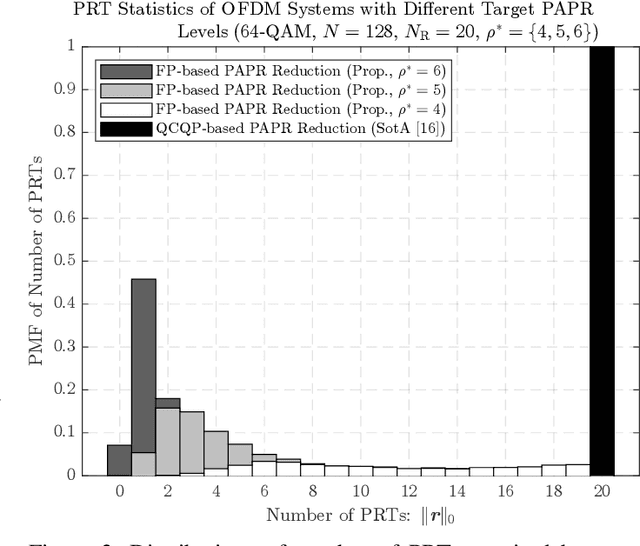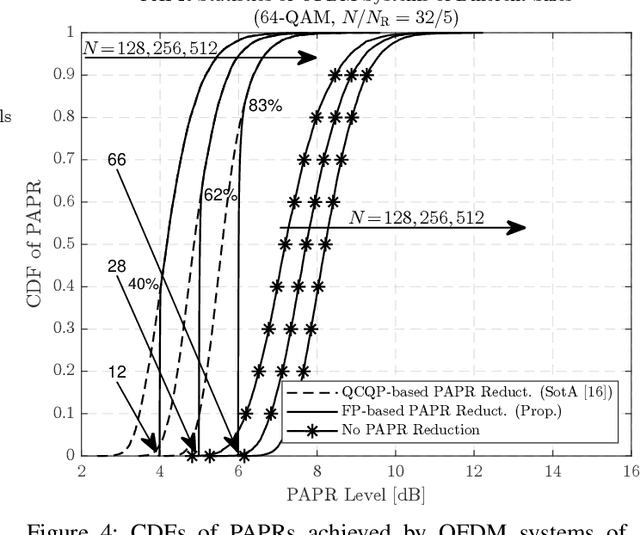Kengo Ando
A Flexible Design Framework for Integrated Communication and Computing Receivers
Jun 06, 2025Abstract:We propose a framework to design integrated communication and computing (ICC) receivers capable of simultaneously detecting data symbols and performing over-the-air computing (AirComp) in a manner that: a) is systematically generalizable to any nomographic function, b) scales to a massive number of user equipments (UEs) and edge devices (EDs), c) supports the computation of multiple independent functions (streams), and d) operates in a multi-access fashion whereby each transmitter can choose to transmit either data symbols, computing signals or both. For the sake of illustration, we design the proposed multi-stream and multi-access method under an uplink setting, where multiple single-antenna UEs/EDs simultaneously transmit data and computing signals to a single multiple-antenna base station (BS)/access point (AP). Under the communication functionality, the receiver aims to detect all independent communication symbols while treating the computing streams as aggregate interference which it seeks to mitigate; and conversely, under the computing functionality, to minimize the distortion over the computing streams while minimizing their mutual interference as well as the interference due to data symbols. To that end, the design leverages the Gaussian belief propagation (GaBP) framework relying only on element-wise scalar operations coupled with closed-form combiners purpose-built for the AirComp operation, which allows for its use in massive settings, as demonstrated by simulation results incorporating up to 200 antennas and 300 UEs/EDs. The efficacy of the proposed method under different loading conditions is also evaluated, with the performance of the scheme shown to approach fundamental limiting bounds in the under/fully loaded cases.
From Theory to Reality: A Design Framework for Integrated Communication and Computing Receivers
Nov 04, 2024



Abstract:We propose a novel flexible and scalable framework to design integrated communication and computing (ICC) -- a.k.a. over-the-air computing (AirComp) -- receivers. To elaborate, while related literature so far has generally focused either on theoretical aspects of ICC or on the design of beamforming (BF) algorithms for AirComp, we propose a framework to design receivers capable of simultaneously detecting communication symbols and extracting the output of the AirComp operation, in a manner that can: a) be systematically generalized to any nomographic function, b) scaled to a massive number of user equipments (UEs) and edge devices (EDs), and c) support the multiple computation streams. For the sake of illustration, we demonstrate the proposed method under a setting consisting of the uplink from multiple single-antenna UEs/EDs simultaneously transmitting communication and computing signals to a single multiple-antenna base station (BS)/access point (AP). The receiver, which seeks to detect all communication symbols and minimize the distortion over the computing signals, requires that only a fraction of the transmit power be allocated to the latter, therefore coming close to the ideal (but unattainable) condition that computing is achieved "for free", without taking resources from the communication system. The design leverages the Gaussian belief propagation (GaBP) framework relying only on element-wise scalar operations, which allows for its use in massive settings, as demonstrated by simulation results incorporating up to 200 antennas and 200 UEs/EDs. They also demonstrate the efficacy of the proposed method under all various loading conditions, with the performance of the scheme approaching fundamental limiting bounds in the under/fully loaded cases.
Blind Bistatic Radar Parameter Estimation in Doubly-Dispersive Channels
Jul 07, 2024Abstract:We propose a novel method for blind bistatic radar parameter estimation (RPE), which enables integrated sensing and communications (ISAC) by allowing passive (receive) base stations (BSs) to extract radar parameters (ranges and velocities of targets), without requiring knowledge of the information sent by an active (transmit) BS to its users. The contributed method is formulated with basis on the covariance of received signals, and under a generalized doubly-dispersive channel model compatible with most of the waveforms typically considered for ISAC, such as orthogonal frequency division multiplexing (OFDM), orthogonal time frequency space (OTFS) and affine frequency division multiplexing (AFDM). The original non-convex problem, which includes an $\ell_0$-norm regularization term in order to mitigate clutter, is solved not by relaxation to an $\ell_1$-norm, but by introducing an arbitrarily-tight approximation then relaxed via fractional programming (FP). Simulation results show that the performance of the proposed method approaches that of an ideal system with perfect knowledge of the transmit signal covariance with an increasing number of transmit frames.
Optimized Tone Reservation for Opportunistic OFDM Communications and Sensing
May 06, 2024



Abstract:We consider the problem of peak-to-average power ratio (PAPR) reduction in orthogonal frequency division multiplexing (OFDM) systems via optimized sparsification of tone reservation (TR). In particular, we propose a novel TR optimization method in which the minimum number of effectively used peak-reserved tones (PRTs) required to satisfy a prescribed PAPR level is found, leaving the remaining PRTs free to be opportunistically utilized by other functionalities, such as joint communication and sensing (JCAS), index modulation (IM), cognitive radio (CR) and others. The proposed method relies on an l0 norm regularization approach to penalize the number of PRTs, leading to a problem convexized via fractional programming (FP), whose solution is shown to ensure that the prescribed PAPR is achieved with high probability with a smaller number of PRTs than state of the art (SotA) methods. The contribution can be seen as a mechanism to enable the opportunistic integration of adjacent functionalities into existing OFDM-based systems.
Discrete Aware Matrix Completion via Convexized $\ell_0$-Norm Approximation
May 03, 2024


Abstract:We consider a novel algorithm, for the completion of partially observed low-rank matrices in a structured setting where each entry can be chosen from a finite discrete alphabet set, such as in common recommender systems. The proposed low-rank matrix completion (MC) method is an improved variation of state-of-the-art (SotA) discrete aware matrix completion method which we previously proposed, in which discreteness is enforced by an $\ell_0$-norm regularizer, not by replaced with the $\ell_1$-norm, but instead approximated by a continuous and differentiable function normalized via fractional programming (FP) under a proximal gradient (PG) framework. Simulation results demonstrate the superior performance of the new method compared to the SotA techniques as well as the earlier $\ell_1$-norm-based discrete-aware matrix completion approach.
 Add to Chrome
Add to Chrome Add to Firefox
Add to Firefox Add to Edge
Add to Edge